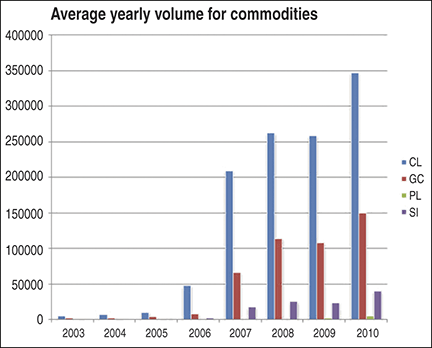TRADING COMMODITIES
Crude, Silver, Gold, And Platinum
Empowering Traders To Trade Commodities
With more and more products being added to the marketplace, how do you decide what to trade? Here’s a look at what you should consider before trading the commodities.
New traders are often overwhelmed at the number of different instruments they could trade. Should they trade stocks, indexes, exchange traded funds (Etfs), spot forex, or currencies? What are the market hours? What are the tick values? What is the slippage for any given instrument? What is a good profit target for the market they choose? What stop should they use? So many questions to ask and so many new things to learn!
Often, instead of researching what’s available, novice traders simply choose a market that others may have recommended. With little or no knowledge about how a market moves, the trader is forced to guess what their stops should be, as well as how to take profits.
Getting enough information is the solution for the new trader’s dilemma, obviously. Let’s shine some light on four commodity markets: crude light, silver, gold, and platinum.
High volume
One of the first things a novice trader should look at when considering a new instrument is volume. In order to enter and exit a market, there must be sufficient buyers and sellers. Over the course of the last few years, the commodity markets have undergone a dramatic change in volume. Figure 1 shows that the average yearly volume for crude light, gold, platinum, and silver markets has more than quadrupled, with crude light being the leader, jumping from 50,000 contracts in 2006 to almost 350,000 now.

Figure 1: AVERAGE YEARLY VOLUME FOR COMMODITIES. The average yearly volume for crude light, gold, platinum, and silver markets has more than quadrupled, with crude light being the leader, jumping from 50,000 contracts to almost 350,000 since 2006.